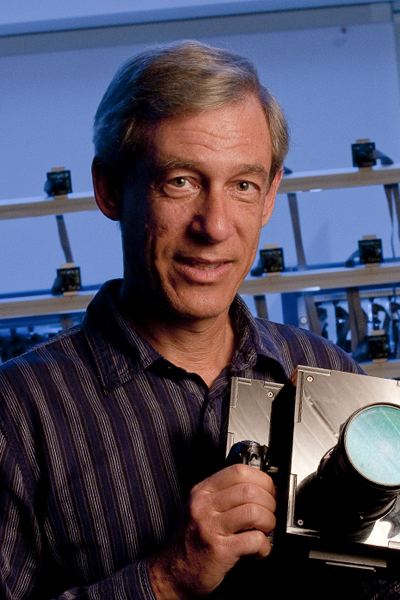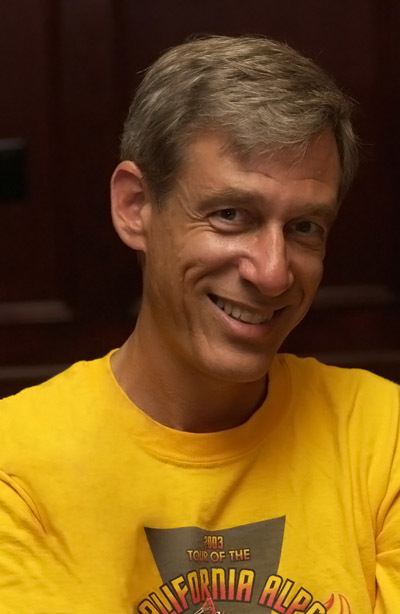Nationality United States Role Computer researcher | Name Marc Levoy | |
 | ||
Alma mater Cornell UniversityUniversity of North Carolina at Chapel Hill Known for Volume renderingLight fields3D scanningStanford Bunny Notable awards Siggraph Computer Graphics Achievement Award (1996) Fields Computer graphics, Computer vision Similar People Mark Horowitz, Joseph Barbera, William Hanna, David Kirschner, George Sidney | ||
Residence United States of America | ||
Marc levoy 2012 doctoral hooding ceremony address unc chapel hill
Marc Levoy is a computer graphics researcher and Professor Emeritus of Computer Science and Electrical Engineering at Stanford University and a Principal Engineer at Google. He is noted for pioneering work in volume rendering, light fields, and computational photography.
Contents
- Marc levoy 2012 doctoral hooding ceremony address unc chapel hill
- Marc levoy lectures on digital photography lecture 4 30mar16 mp4
- Notable publications
- References

Levoy first studied computer graphics as an architecture student under Donald P. Greenberg at Cornell University. He received his B.Arch. in 1976 and M.S. in Architecture in 1978. He developed a 2D computer animation system as part of his studies, receiving the Charles Goodwin Sands Memorial Medal for this work. Greenberg and he suggested to Disney that they use computer graphics in producing animated films, but the idea was rejected by several of the Nine Old Men who were still active. Following this, they were able to convince Hanna-Barbera Productions to use their system for television animation. Despite initial opposition by animators, the system was successful in reducing labor costs and helping to save the company, and was used until 1996. Levoy worked as director of the Hanna-Barbera Animation Laboratory from 1980 to 1983.

He then did graduate study in computer science under Henry Fuchs at the University of North Carolina at Chapel Hill, and received his Ph.D. in 1989. While there, he published several important papers in the field of volume rendering, developing new algorithms (such as volume ray tracing), improving efficiency, and demonstrating applications of the technique.

He joined the faculty of Stanford's Computer Science Department in 1990. In 1991, he received the National Science Foundation's Presidential Young Investigator Award. In 1994, he co-created the Stanford Bunny, which has become an icon of computer graphics. In 1996, he and Pat Hanrahan coauthored the paper, "Light Field Rendering," which forms the basis behind many image-based rendering techniques in modern-day computer graphics. His lab also worked on applications of light fields, developing technologies such as a light-field camera and light-field microscope, and on computational photography. (The phrase "computational photography" was first used by Steve Mann in 1995. )It was re-coined and given a broader meaning by Levoy for a course he taught at Stanford in 2004 and a symposium he co-organized in 2005.)

Levoy took a leave of absence from Stanford in 2011 to work at GoogleX as part of Project Glass. In 2014 he retired from Stanford to become full-time at Google, where he currently leads a team in Google Research that works broadly on cameras and photography. One of his projects is HDR+ mode for Nexus and Google Pixel smartphones. In 2016 the French agency DxO gave the Pixel the highest rating ever given to a smartphone camera. His team also works on underlying technologies for Project Jump, a light field camera that captures stereo panoramic videos for VR headsets. Although Levoy no longer teaches at Stanford, a course he taught on digital photography was rerecorded at Google in 2016 and is available online for free.
For his pioneering work in volume rendering, Levoy was the recipient of the ACM SIGGRAPH Computer Graphics Achievement Award in 1996. In 2007 he was inducted as a Fellow of the Association for Computing Machinery.
Marc levoy lectures on digital photography lecture 4 30mar16 mp4
Notable publications
- Marc Levoy (May 1988). "Display of Surfaces from Volume Data". IEEE Computer Graphics and Applications. 8 (3).
- Philippe Lacroute & Marc Levoy. "Fast Volume Rendering Using a Shear-Warp Factorization of the Viewing Transformation". Proceedings of SIGGRAPH 1994.
- Brian Curless & Marc Levoy. "A Volumetric Method for Building Complex Models from Range Images". Proceedings of SIGGRAPH 1996.
- Marc Levoy & Pat Hanrahan. "Light Field Rendering". Proceedings of SIGGRAPH 1996.
- Marc Levoy; Kari Pulli; Brian Curless; Szymon Rusinkiewicz; David Koller; Lucas Pereira; Matt Ginzton; Sean Anderson; James Davis; Jeremy Ginsberg; Jonathan Shade & Duane Fulk. "The Digital Michelangelo Project: 3D scanning of large statues". Proceedings of SIGGRAPH 2000.
- Marc Levoy; Ren Ng; Andrew Adams; Matthew Footer; Mark Horowitz. "Light Field Microscopy". Proceedings of SIGGRAPH 2006.
- Andrew Adams; Eino-Ville (Eddy) Talvala; Sung Hee Park; David E. Jacobs; Boris Ajdin; Natasha Gelfand; Jennifer Dolson; Daniel Vaquero; Jongmin Baek; Marius Tico; Henrik P.A. Lensch; Wojciech Matusik; Kari Pulli; Mark Horowitz & Marc Levoy. "The Frankencamera: An Experimental Platform for Computational Photography". Proceedings of SIGGRAPH 2010.
- Jonathan Ragan-Kelley; Andrew Adams; Sylvain Paris; Marc Levoy; Saman Amarasinghe & Fredo Durand. "Decoupling algorithms from schedules for easy optimization of image processing pipelines". Proceedings of SIGGRAPH 2012. (first paper on the Halide language)
- Samuel W. Hasinoff; Dillon Sharlet; Ryan Geiss; Andrew Adams; Jonathan T. Barron; Florian Kainz; Jiawen Chen & Marc Levoy. "Burst photography for high dynamic range and low-light imaging on mobile cameras". Proceedings of SIGGRAPH Asia 2016. (paper on HDR+)
